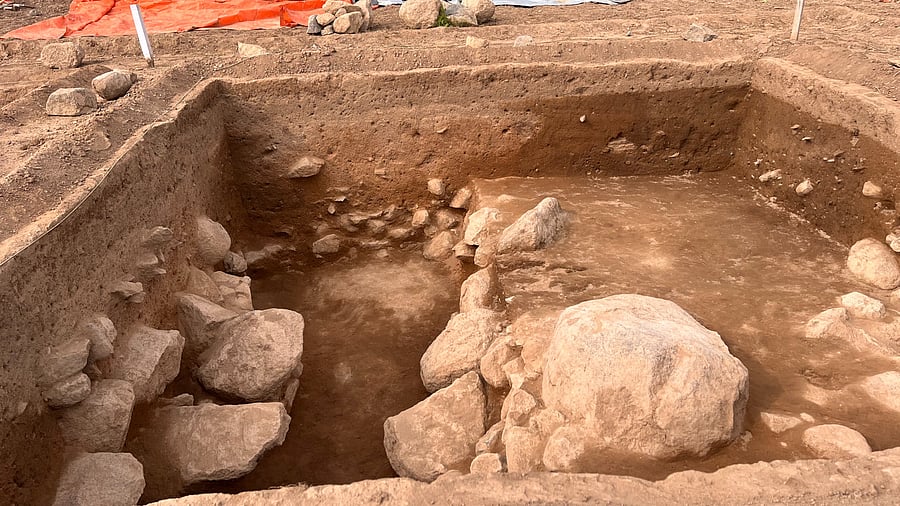
A view of the excavation site.
Credit: DH Photo/ETB Sivapriyan
Chennanoor: In the midst of lush agricultural fields in this nondescript village in Krishnagiri district, stand two land parcels where archaeologists are unravelling secrets of how ancient people in the region lived. Chennanoor in Uthangarai taluk is emerging as yet another important site of the Neolithic Age in Tamil Nadu.
Though Tamil Nadu so far had five locations – Paiyampalli, Valasai, Chettimedu, Mayiladumparai, and Molapalayam – identified as Neolithic Sites, Chennanoor is a treasure trove with about 1 metre of Neolithic deposits being found along with heaps of potsherds.
There has never been a dull moment in Chennanoor ever since the excavations began in June 2024. Archaeologists have so far dug 11 trenches in two locations close to each other in the fields from where as many as 327 artefacts have been recovered from different cultural levels.
Chennanoor’s significance is that the site has unravelled evidence about continuous habitation from the Microlithic Age to the Early Historic Period.
Tools like stone-made blades belonging to the Microlithic Age, hand-made pottery, burnished ware from the Neolithic Age, and black-and-redware from the Iron Age have been recovered from the same site.
“While the deposits in the five identified Neolithic Sites were about 10-15 cm, the Neolithic cultural deposits in Chennanoor are about 1 metre, which is very significant. As we dig further, we believe, we will stumble upon further evidence of the above-mentioned period from the site,” a source in the Tamil Nadu State Department of Archaeology (TNSDA) told DH.
The findings could fill the gap as archaeological excavations in Tamil Nadu have yielded evidence of the Microlithic Age, and Iron Age, leaving out the Neolithic Age that existed between the two. “We didn’t stumble upon many iron objects from the site. Some iron pieces that we found were also rusted,” the source added.
With the findings, the archaeologists have established the cultural sequence from one stage to another – Microlithic Age to Neolithic Age to Iron Age -- stratigraphically. “We believe Chennanoor will become one of the biggest sites in the state for the Neolithic Age. This seems to be the perfect site to know how people in the Neolithic Age lived,” the source added.
Samples collected from the cultural deposits found at the site will be sent to the Ancient DNA Laboratory at the Madurai Kamaraj University for detailed analyses.
Archaeological excavations in Tamil Nadu have created significant interest among people in the past few years. Last week, the TNSDA said carbon dating of artefacts has established that usage of iron was widespread in the state and dates back to 5,000 years ago, making it the oldest date for the Iron Age in India.
The findings were based on AMS and OSL dating of cultural deposits excavated from Adichanallur, Sivagalai, Mayiladumparai, Mangadu, Thelunganur, and Kilnamandi.